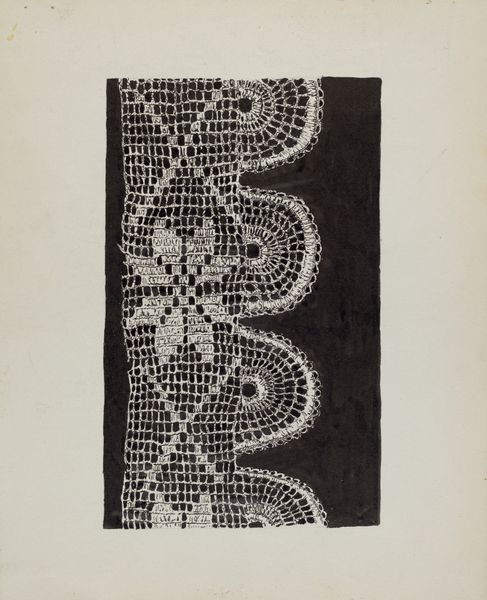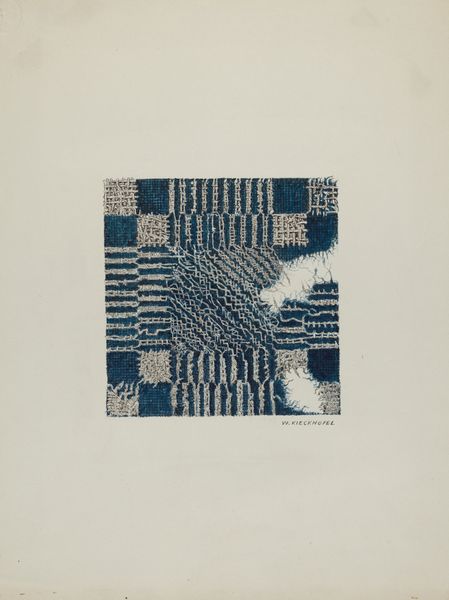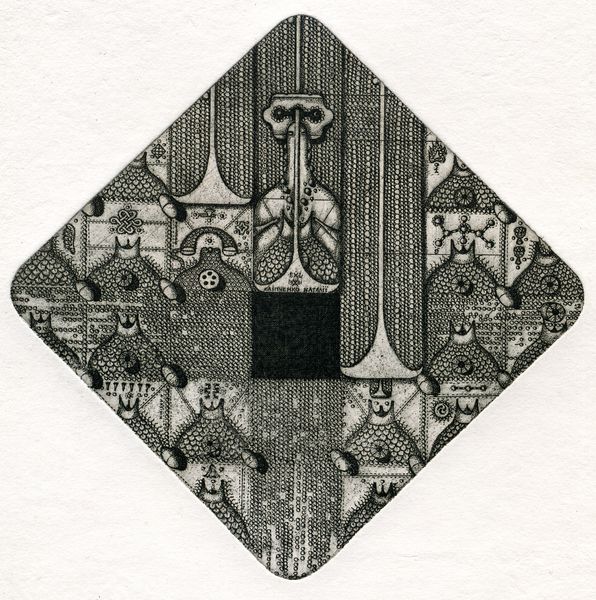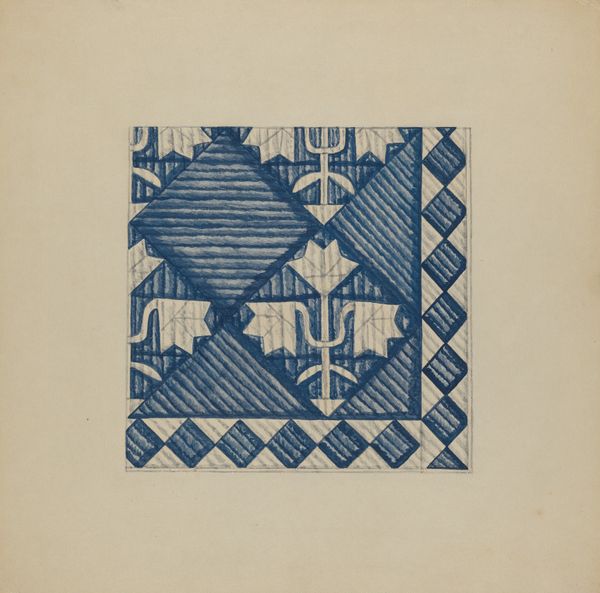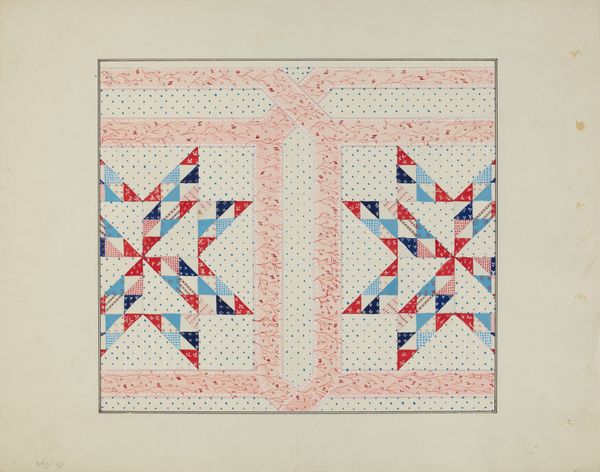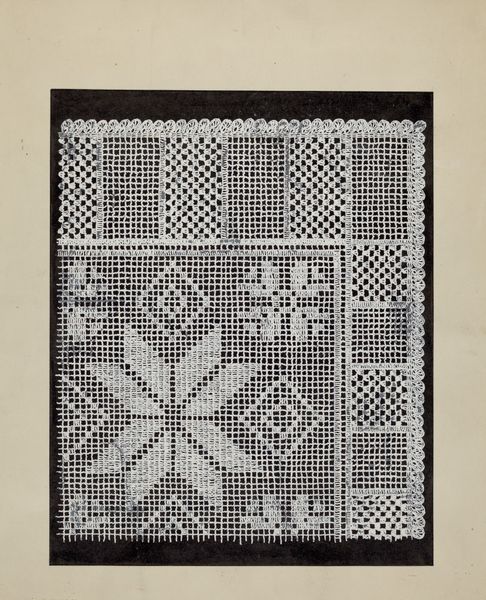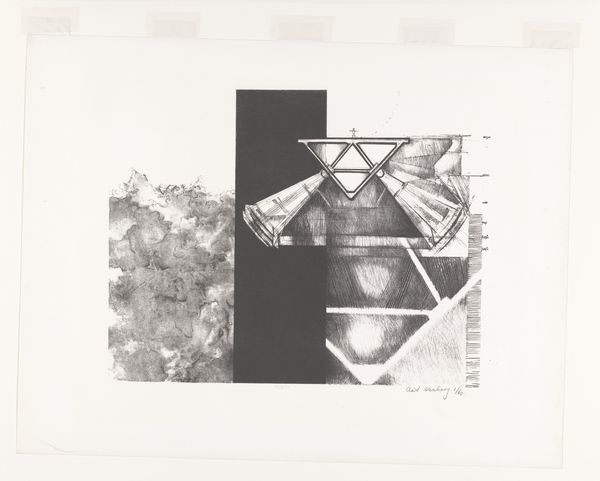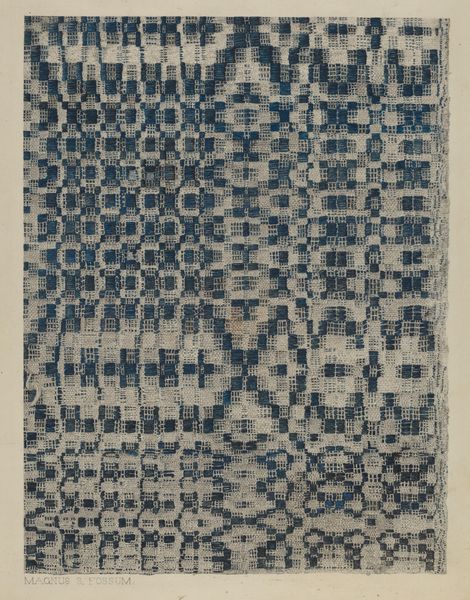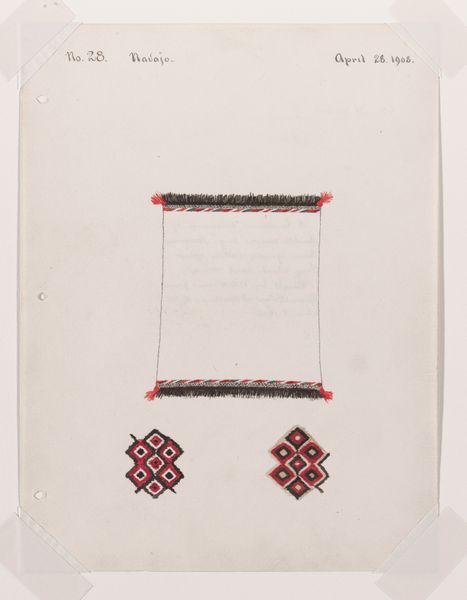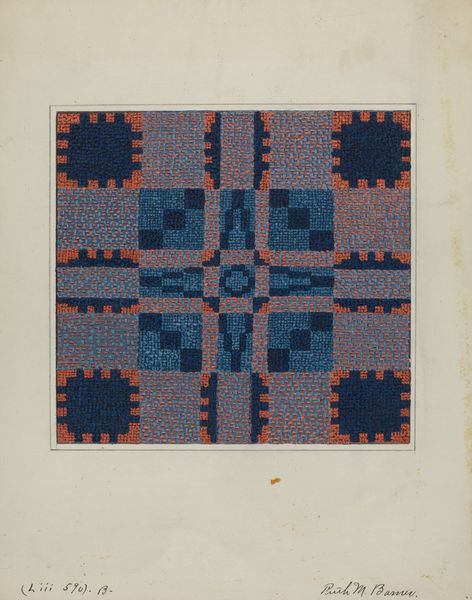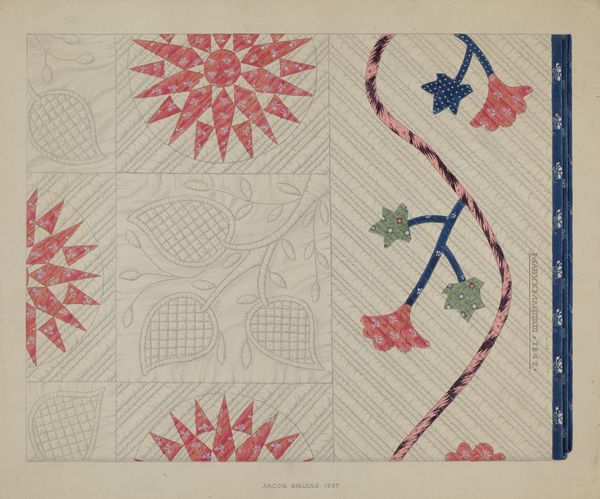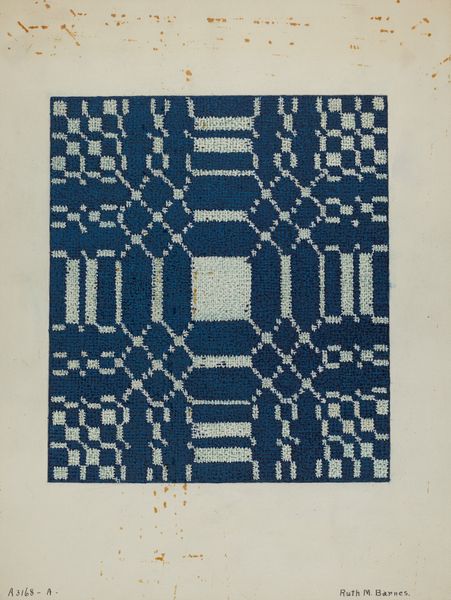
fibre-art, weaving, textile
#
fibre-art
#
weaving
#
textile
#
organic pattern
#
geometric
#
line
#
indigenous-americas
Dimensions: 32.4 × 39.4 cm (12 3/4 × 15 1/2 in.)
Copyright: Public Domain
Curator: I'm struck by how fragile yet intricate this headcloth fragment is. Made by the Chancay people sometime between 1000 and 1476, it resides here at the Art Institute of Chicago. Editor: My first impression is of its sheer delicacy and meticulous craftsmanship; it looks almost like a drawing. I wonder about the woman, or perhaps women, who wove this fragment. Curator: Yes, exactly! The materiality speaks volumes. Woven from fiber, most likely cotton or wool, this textile demonstrates incredibly sophisticated weaving techniques. The act of weaving, itself, the labour involved, it all must be taken into account. We shouldn’t think of weaving as mere "craft", because that obscures its real history. Editor: I completely agree. Beyond technique, it evokes themes of identity and status within Chancay society. Who wore it, and what did the geometric patterns and overall design signify? Textiles held immense value, going beyond simple utility; they were deeply connected to ritual and social hierarchy. The time and dedication involved signifies how it would be seen in ancient Peruvian society, a signal of someone of a certain stature. Curator: Precisely. Think of the economic considerations too: access to materials, the division of labour, and ultimately, its place within trade networks of the period. It becomes clear this fragment embodies broader societal structures. Editor: This piece whispers stories of pre-colonial Latin America, resilience, and sophisticated systems of knowledge passed down through generations. Its survival is an act of resistance against the erasure of indigenous histories. I feel how personal and meaningful these textiles are, not to just be viewed as something beautiful. Curator: Agreed. Looking at this, you see the hands that made it, the materials from which it’s formed, the historical context in which it’s from. It moves beyond simple visual appreciation into a study of making and value. Editor: It definitely adds another layer to how we might interpret ancient Andean cultures and societies, helping us move past old colonial perceptions that are still prevalent in Western scholarship. This one small piece says so much!
Comments
No comments
Be the first to comment and join the conversation on the ultimate creative platform.
